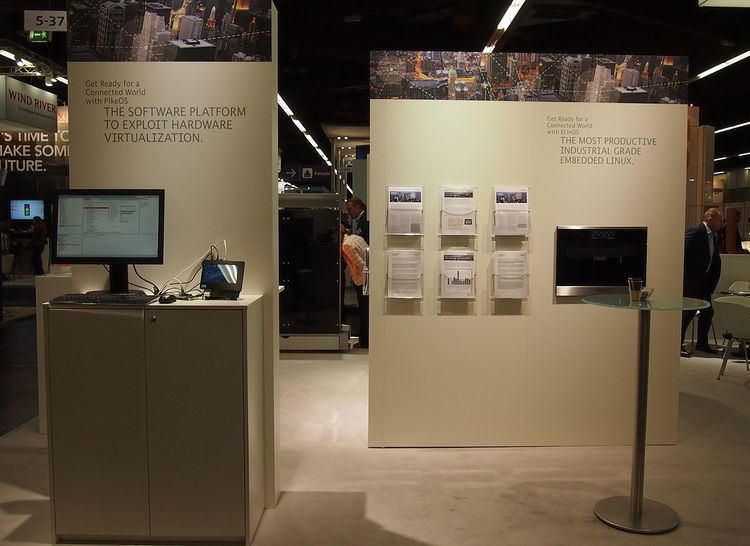Working state Current Marketing target Embedded systems | OS family Unix-like Latest release ELinOS 6.1 / July 2016 | |
 | ||
Source model Open source with commercial support | ||
ELinOS is a commercial development environment for embedded Linux. It consists of a Linux distribution for the target embedded system and development tools for a development host computer. The development host computer usually is a standard desktop computer running Linux or Windows. The Linux system and the application software for the target device are both created on the development host.
Contents
ELinOS focuses on industrial applications. For that purpose optional extensions for the Linux kernel are provided. For example, real-time patches from OSADL can be used to improve timing behavior. The kernel will always be specifically compiled for the embedded system. Userspace applications are provided as precompiled binaries in order to save time for compilation. Most of the ELinOS software packages are open source and licensed under the GPL.
ELinOS provides embedded Linux as a standalone operating system or it can be integrated into the PikeOS virtualization platform if safety and security demands cannot be met by Linux alone. The latter might be the case if a certification according to a strict industry standard is required.
Eclipse is the technical basis for the functionality provided by the integrated development environment (IDE) on the development host.
ELinOS was first published in 1999.
Typical workflow
1. Select the hardware of the target embedded system
2. Select the features wanted on the target system
3. Compile the Linux kernel
4. Generate the target's file system image
5. Deploy the file system image to the target system.
6. Test and analyze the software on the target system using the tracing tool
7. Debug the application software on the target system using the debugger
Supported hardware
The following processor architectures are supported, with a large set of board support packages (BSP) for various boards:
Symmetric multiprocessing is supported if a multi-core processor is used.
